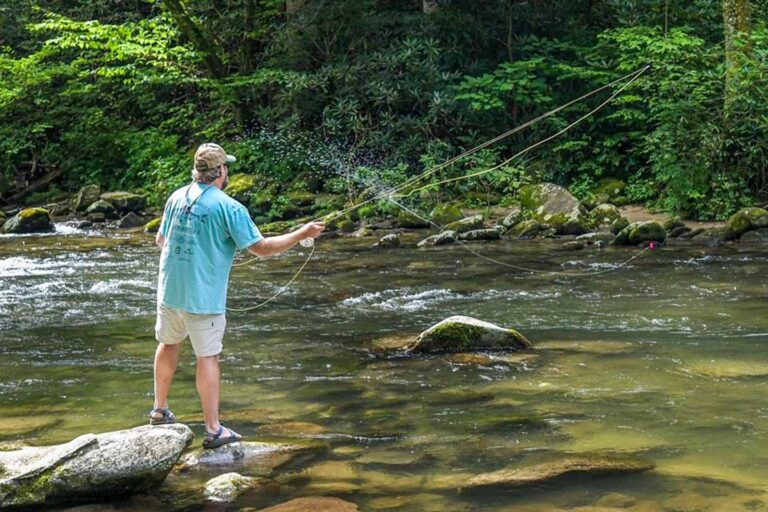Chattanooga is certainly not lacking in outdoor pursuits. From hiking and biking to fishing, rock climbing, and even hang gliding, there seems to be an activity for every speed and style. Yet quietly flying under the radar is birdwatching – a pastime that’s beloved by many for the way it connects them to the natural world. Of course, adding to birdwatching’s appeal is its convenience and accessibility; you can birdwatch from pretty much anywhere at any time. That’s not to say that there aren’t optimal birding locales – and the Scenic City is full of them.
Here, we’re covering some of the best spots around town to spend a few hours looking up.

Audubon Acres
The 130-acre Audubon Acres, with its strategic location on the South Chickamauga Creek and its mix of hardwood forests and open meadows, has cultivated a true birdwatcher’s paradise. Migrating species such as vireos, warblers, tanagers, flycatchers, and thrushes flock to the property, and common loons are also occasionally spotted during migration. Year-round, you’ll find wood ducks, belted kingfishers, and great blue herons along the banks of the creek, and in the summer months, house wrens, indigo buntings, and northern parulas grace the park with their presence. Daily, birdwatchers can expect to find brown-headed nuthatches, Eastern bluebirds, and multiple species of woodpeckers. Audubon Acres welcomes guests Mondays through Saturdays from 9 a.m. to 5 p.m. and Sundays from 1 until 5 p.m.
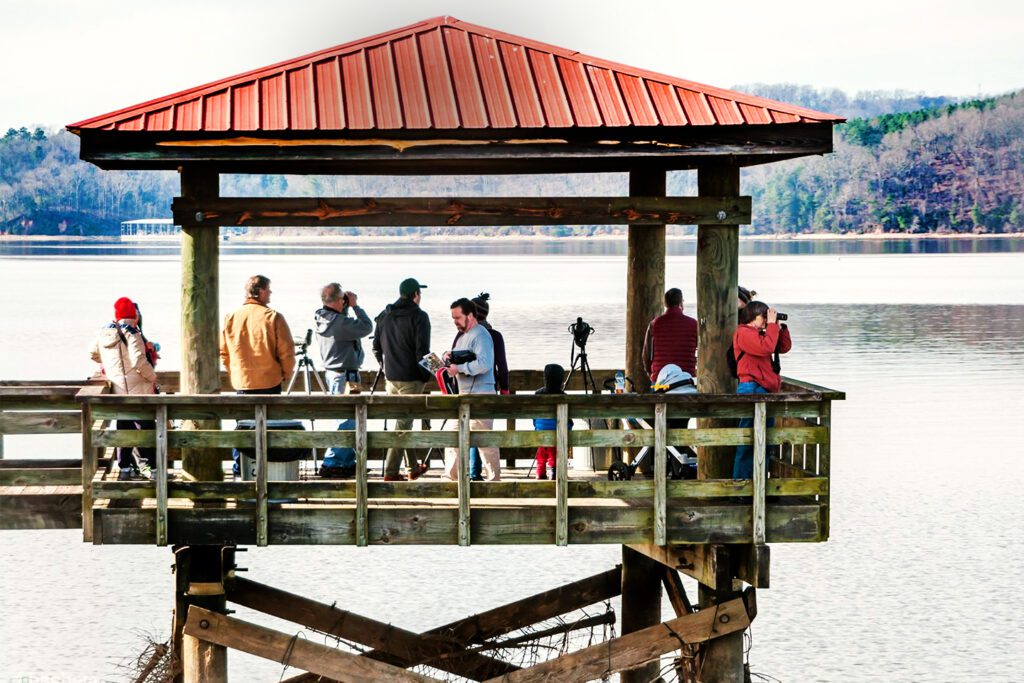
Booker T. Washington State Park
Booker T. Washington State Park holds 353 acres and birding opportunities galore. Bald eagles, common loons, horned grebes, and orchard orioles are among the 129 species of birds that have been observed throughout the park. The fishing pier is your best bet for viewing great blue herons, and breeding brown-headed nuthatches and pine warblers can be seen among the park’s Virginia pines. Take the Nature Trail to connect to the Outer Look Trail for five miles of hiking through the park and along the shoreline – when it’s time to observe spring and fall migratory birds, you’ll be in for a real treat!

Chester Frost Park
A leisurely stroll around Hixson’s Chester Frost Park provides ample prospects for birdwatching year-round. Locals have identified 170 species of birds; among them are the brown-headed nuthatch and the red-headed woodpecker in the pines and, during spring and fall migration, warblers, flycatchers, and vireos. Bald eagles, loons, gulls, and various other water birds are known to make their appearance come winter, as the public park is located on Chickamauga Lake.
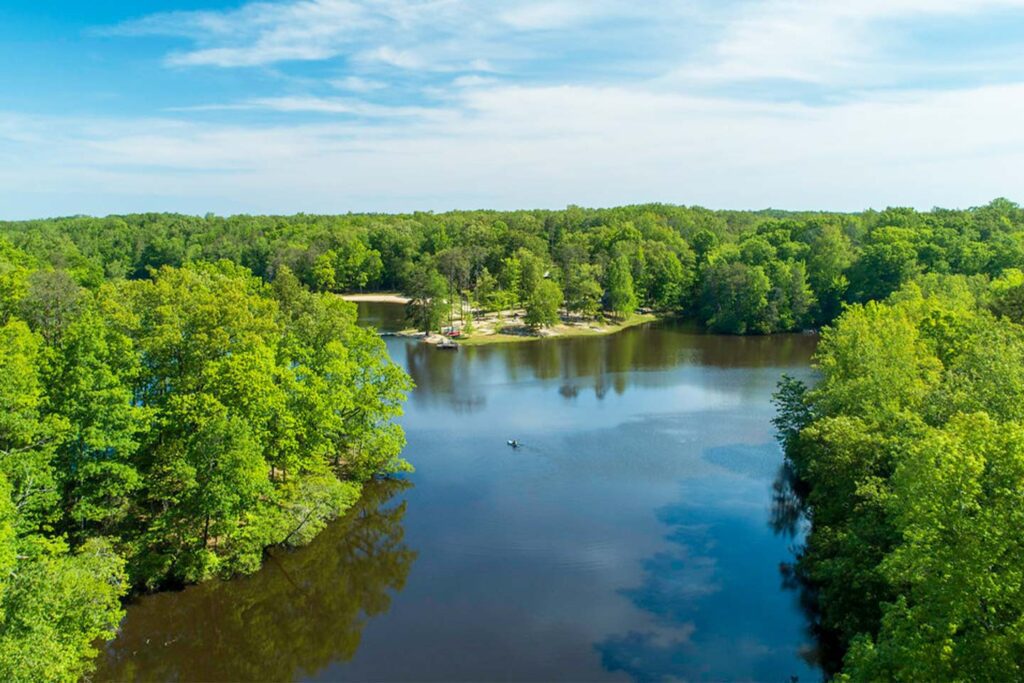
Harrison Bay State Park
Boasting approximately 40 miles of Chickamauga Lake shoreline, Harrison Bay State Park welcomes birders of all experience levels, from the novice to the experienced eagle eye. Approximately 130 species of birds have been spotted here – shoreline birds such as loons, gulls, and ducks are abundant in the area, while wintering waterfowl, bald eagles, and osprey can also be seen. In fact, the park’s golf course is home to a bald eagle nest that’s the site for Tennessee State Parks’ “Eagle Cam.” Prime birding locations include the forested Bay Point Loop Trail – which follows the lakeshore and shallow bays – and the Harrison Bay picnic area, a wooded and semi-open peninsula providing scenic views of the main lake and its wildlife.
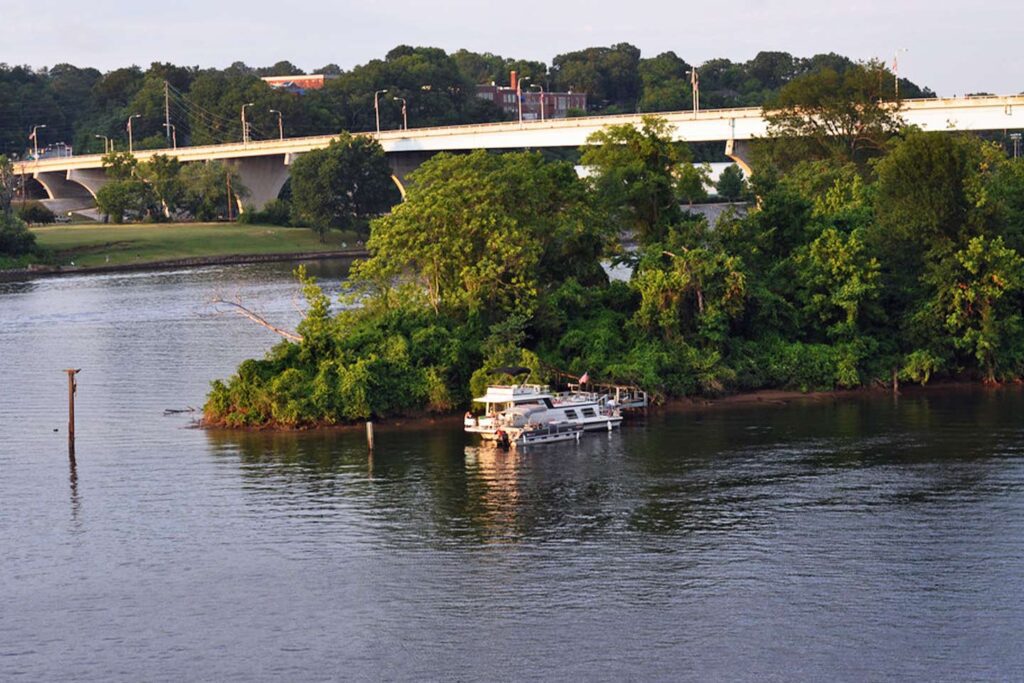
Maclellan Island
Chances are, you’ve seen Maclellan Island – a nature sanctuary situated in the middle of the Tennessee River in downtown Chattanooga. But have you ever visited it? Keen birdwatchers will tell you that this area is a top spot for observing wildlife (and not just because of its remote locale – the island is only accessible via water). Nesting platforms can be found on both ends of the island, which allow visitors to view osprey nesting habits, and on the island’s upper end, you’ll come across a great blue heron rookery. Other local birds such as cardinals, tanagers, buntings, and warblers also call the island home. Nova Conservation is planning a “Boating & Birding” excursion to Maclellan later this month, so if you’re interested in taking up birdwatching, don’t miss out!
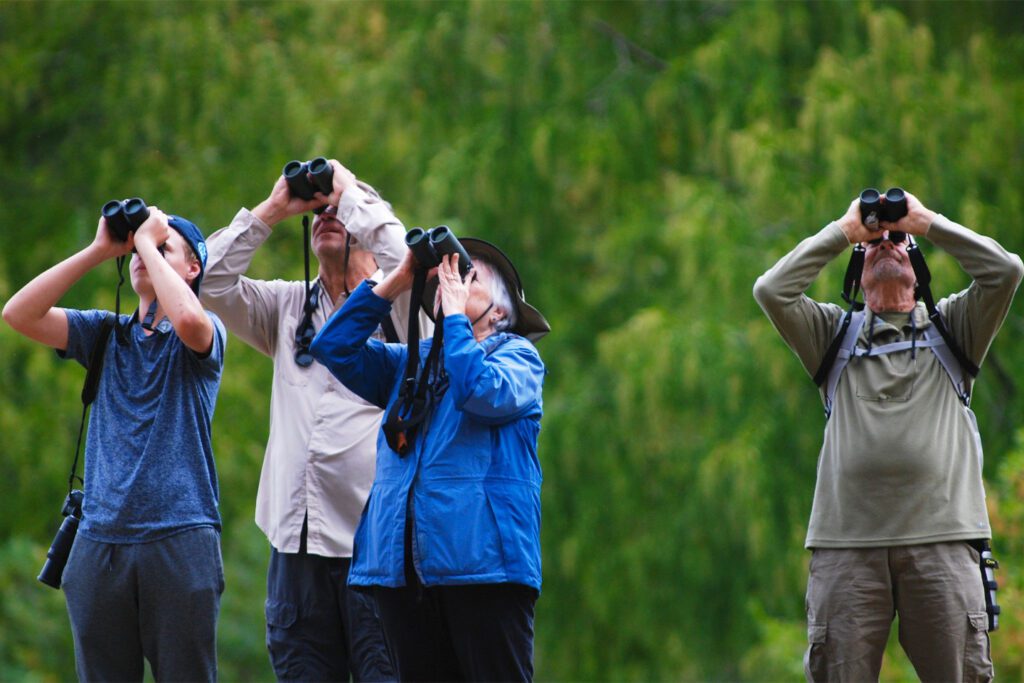
Reflection Riding Arboretum & Nature Center
With more than 300 acres to explore, the family-friendly Reflection Riding Arboretum & Nature Center makes a great day trip for hiking, mountain biking, canoeing, and, of course, birding. Among its many trails is the Blue Heron Boardwalk Trail, which takes visitors through Reflection Riding’s blue heron wetlands showcasing multiple bird species. While birders have the opportunity to discover local species in the wild, the Nature Center also has several species under its care, from barn and barred owls to broad-winged hawks, American kestrels, and Sandhill cranes, providing an up-close and personal experience for interested parties. Whether they’ve suffered an injury or been kept as a pet illegally, these birds are unable to survive on their own in the wild and benefit from the care and management of the center.

Standifer Gap Marsh
Northeast of the city sits Standifer Gap Marsh, a cattail marsh that has become a hot spot for birders in recent years. The landscape features large pockets of open water as well as strands of wet grasses, bulrushes, and sedges, so don’t forget to wear your boots when exploring this pocket of Chattanooga! Just a few of the more than 200 species found here include Virginia rails, least bitterns, willow flycatchers, belted kingfishers, warblers, vireos, song and field sparrows, red-winged blackbirds, and Eastern phoebe. You can easily spend a few hours walking along the edge of the marsh and the gravel road that runs through it. Nearby, the Brainerd Levee is another popular option for viewing marsh birds; the freshwater habitat has seen great blue herons, great egrets, American bitterns, common yellowthroats, and more.
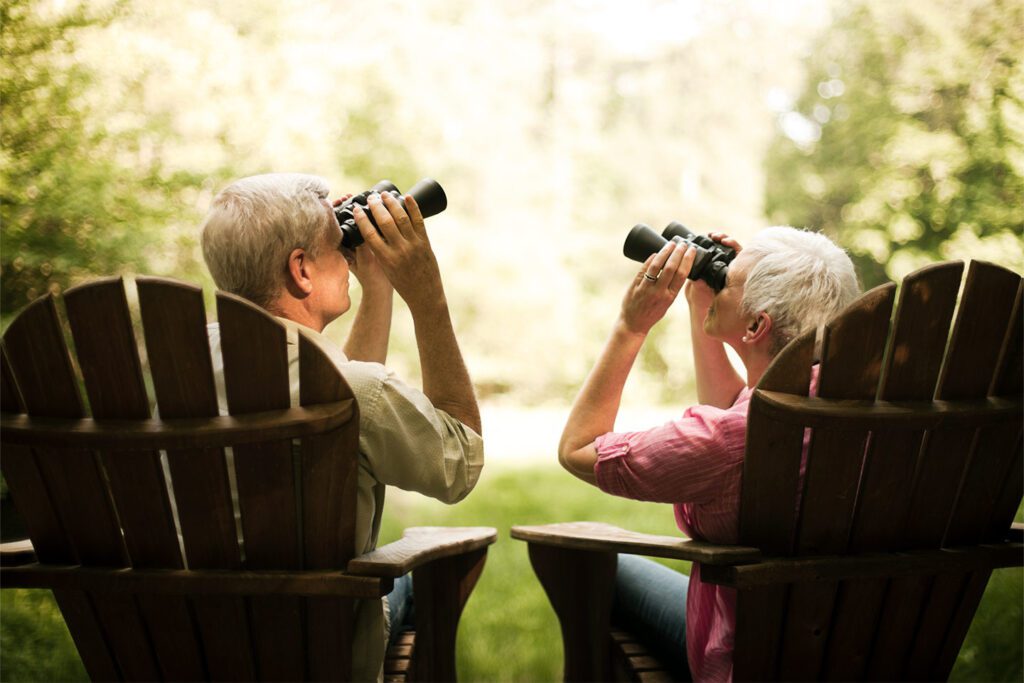
Right in Your Backyard
Remember when we said you could enjoy watching the birds from pretty much anywhere? Sometimes the best birdwatching can take place right in your backyard. Common feeder birds in Chattanooga include Northern cardinals, Carolina chickadees, American goldfinches, tufted titmice, Eastern bluebirds, several species of woodpeckers, and many more. If you want to watch the birds from the comfort of your home, there are several ways to make your backyard more attractive to the birds. Below are some tips to get you started!
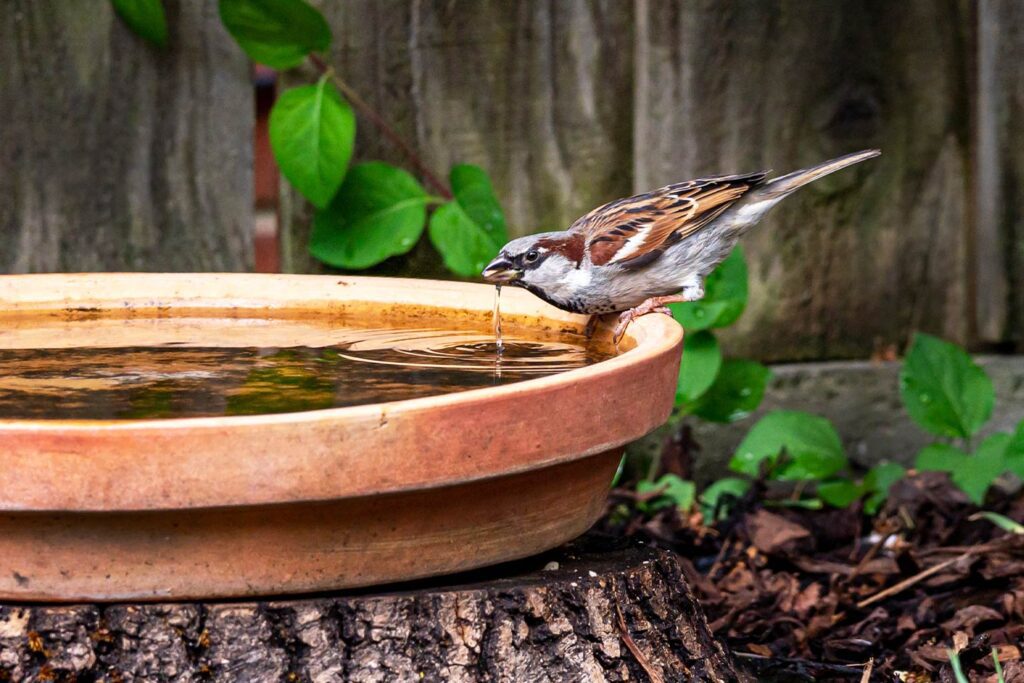
How to Attract Backyard Birds in Chattanooga:
1. Add a source of clean, freshwater. Water can be harder to come by than food, especially on the hottest days of the summer and the coldest days of the winter. Adding a birdbath is an excellent way to attract birds to your yard or increase the variety of birds you might see. Migratory birds that pass through Tennessee will make water a first priority, so you can increase your odds of getting exciting new visitors.
Pro tip: Moving water is even better, as the ripples reflect light that the birds can spot from the sky. If you don’t live near the river, you can add a fountain or purchase a device that will keep your water moving.
2. Add a variety of bird feeders. Different species have different dietary needs, so you can increase the variety of birds in your yard by increasing the variety of the food you offer. For example, sunflower seeds are beloved by finches and cardinals, suet is a real treat for wrens and woodpeckers, and mealworms are quickly snapped up by bluebirds and phoebes.
Pro tip: Once you find foods that your birds love, try to keep your offerings consistent. Birds are creatures of habit, and even a slight change can make them hesitate to land at your feeders.
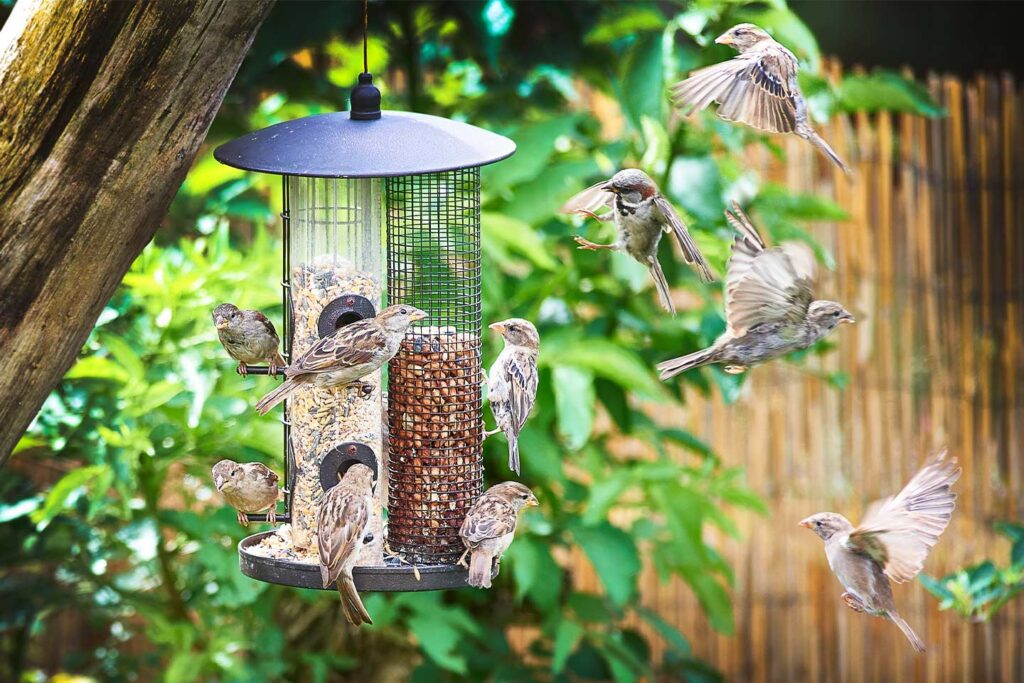
3. Keep feeders clean. The National Audubon Society recommends cleaning bird feeders every month to prevent spreading diseases among your backyard birds and keep mold from growing in the feeders. If birds stop coming to a feeder suddenly, check that it is clean and free of pests like ants.
Pro tip: A bit of dish soap and warm water will usually do the trick, but to thoroughly disinfect a feeder, you can soak it in a solution of one part bleach to nine parts water. Be sure to rinse well and let the feeder dry completely before refilling with food.
4. Add a bird house or nesting box. Particularly in the spring, birds are always on the lookout for safe places to nest and raise their babies. Competition for natural spots, like hollows in trees, can be pretty fierce, so plenty of birds will gladly accept the opportunity to move into a clean, safe nesting box in your yard. You will get to see the parents raise their babies, teach them to find food, and even teach them to fly – it is an incredible thing to witness in your backyard!
Pro tip: Consider which species of bird you would like to see nesting in your yard and buy a house that is made for that bird. Differences like the size of the house, the size of the port, and where the house is placed can make your birdhouse more attractive to specific types of birds.






